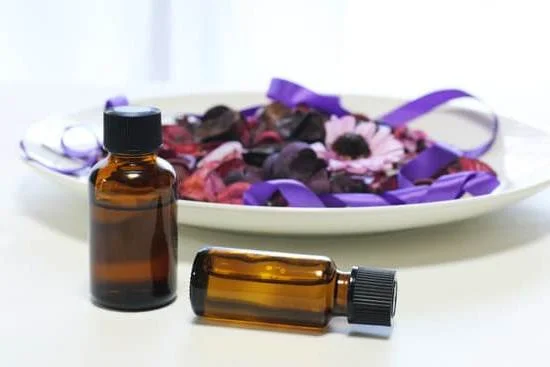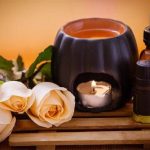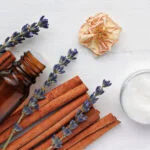Aromatherapy Foot Massage is a therapeutic technique that combines the benefits of both aromatherapy and foot massage to promote relaxation, relieve stress, and improve overall well-being. This unique form of therapy involves the use of essential oils derived from plants, which are known for their various healing properties.
The origins of aromatherapy can be traced back thousands of years, with ancient civilizations such as Egypt, China, and India utilizing aromatic herbs and oils for medicinal purposes. Over time, this holistic practice has evolved into a popular alternative therapy that harnesses the power of scent to enhance physical and emotional health.
Essential oils play a crucial role in aromatherapy foot massage. These highly concentrated plant extracts are chosen for their specific therapeutic qualities and are mixed with carrier oils before being applied to the feet during the massage. Some commonly used essential oils include lavender for relaxation, peppermint for pain relief, tea tree for its antimicrobial properties, and eucalyptus for respiratory support.
Through a combination of gentle pressure applied to specific points on the feet and the inhalation of aromatic scents, aromatherapy foot massage can stimulate circulation, release tension in the muscles, promote lymphatic drainage, alleviate pain, reduce anxiety or depression symptoms, boost mood and immune function, improve sleep quality, and induce deep relaxation.
Whether you are looking to unwind after a long day or seeking natural remedies for various health concerns, aromatherapy foot massage offers an effective and enjoyable way to achieve balance and harmony within your body and mind. In the following sections of this article, we will delve deeper into its history, explore different essential oil options for foot massage, discuss techniques and benefits, weigh the pros and cons of DIY versus professional sessions,and provide precautions for safe practice.
So let’s embark on this aromatic journey towards ultimate relaxation and wellness.
History of Aromatherapy
Aromatherapy has a rich history that dates back thousands of years. The use of aromatic plants and herbs for healing purposes can be traced across different ancient civilizations, including Egypt, China, India, and Greece. While the term “aromatherapy” may be relatively modern, the concept of using essential oils for therapeutic benefits has been practiced for centuries.
Origins of Aromatherapy:
The earliest recorded use of aromatic plants can be found in ancient Egyptian civilization, where they were used for religious rituals, embalming practices, and as offerings to gods and goddesses. The Egyptians discovered the art of extracting oils from plants through a process called enfleurage, which involved macerating flowers in fats or oils to capture their fragrance. These precious oils were then used for perfumes as well as medicinal purposes.
In traditional Chinese medicine (TCM), aromatics played a significant role in balancing the body’s energy flow and promoting overall well-being. Aromatics such as camphor, cinnamon, ginger, and orange peel were commonly used in TCM to treat various ailments and enhance vitality.
Evolution of Aromatherapy:
The modern practice of aromatherapy owes its evolution to a French chemist named René-Maurice Gattefossé. In the early 20th century, Gattefossé accidentally discovered the healing properties of lavender oil when he severely burned his hand in a laboratory accident. He immersed his hand in a container of lavender oil and noticed that it not only alleviated pain but also promoted faster healing with minimal scarring.
Gattefossé’s accidental discovery led him to explore further into the therapeutic properties of essential oils. He coined the term “aromatherapy” to describe the use of these volatile plant extracts for healing purposes. His research paved the way for modern aromatherapy practices and contributed significantly to its recognition as an alternative holistic healing modality.
Today, aromatherapy has gained widespread popularity as a complementary therapy for various health conditions and a tool for relaxation and stress relief. Its historical roots and continued exploration of the healing power of essential oils make it an integral part of holistic wellness practices worldwide.
Essential Oils for Aromatherapy Foot Massage
When it comes to aromatherapy foot massage, choosing the right essential oil is key. Essential oils are highly concentrated plant extracts that have been used for centuries for their therapeutic properties. They are the backbone of aromatherapy and play a crucial role in enhancing the benefits of a foot massage.
Lavender Oil
Lavender oil is one of the most popular essential oils used in aromatherapy foot massage. Known for its soothing and calming properties, lavender oil helps to relax the mind and body. It is especially beneficial for people who struggle with anxiety or insomnia. Not only can lavender oil promote better sleep, but it can also help alleviate pain and inflammation.
Peppermint Oil
Another commonly used essential oil for aromatherapy foot massage is peppermint oil. With its cooling sensation and refreshing aroma, peppermint oil can provide relief from fatigue, muscle soreness, and tension headaches. When applied to the feet, it can invigorate and revitalize the senses, making it an excellent choice for those who need an energy boost.
Tea Tree Oil
Tea tree oil is well-known for its antimicrobial and antifungal properties. As such, it is often used in aromatherapy foot massage to combat foot odor and fungal infections like athlete’s foot. Tea tree oil also has soothing properties that can help relieve itching or irritation on the feet.
Eucalyptus Oil
Eucalyptus oil is known for its respiratory benefits and ability to clear congestion. In an aromatherapy foot massage, eucalyptus oil can help open up the airways and promote easier breathing. Additionally, it has analgesic properties that make it effective in reducing pain or discomfort in swollen or tired feet.
Choosing the Right Blend
While these essential oils can be used individually, they can also be combined to create unique blends that cater to specific needs. A popular blend for relaxation, for example, may consist of lavender and chamomile essential oils. On the other hand, a blend designed to energize might include peppermint and rosemary essential oils. When choosing essential oils for an aromatherapy foot massage, consider the desired effects and any specific concerns or preferences you may have.
Choosing the Right Essential Oil
When it comes to selecting the right essential oil for an aromatherapy foot massage, there are a few factors to consider. Each essential oil has its own unique properties and benefits, so choosing the right one can enhance the overall experience and maximize the desired effects.
Firstly, it is important to consider the individual’s preferences and needs. Different essential oils have different scents, and personal preferences play a significant role in creating a soothing and enjoyable experience. Some people may find floral scents like lavender or rosemary to be calming, while others may prefer citrusy scents such as lemon or bergamot for an energizing effect. It is always recommended to choose an oil that appeals to your senses and promotes relaxation.
Another factor to consider is the specific benefits of each essential oil. Different oils have different therapeutic properties that can address various concerns. For example, peppermint oil has cooling properties that can relieve soreness and reduce inflammation, making it ideal for foot massages after physical activity or long periods of standing. On the other hand, tea tree oil has antimicrobial properties that can be beneficial in treating fungal infections or unpleasant odors.
Additionally, it is crucial to take into account any allergies or sensitivities when selecting an essential oil for a foot massage. Some individuals may have allergies or sensitivities to certain oils or chemical components present in them. It is always advisable to perform a patch test before using any new essential oil topically. Diluting the essential oil with a carrier oil like almond or coconut oil can also help prevent any adverse reactions.
The Art of Foot Massage
Giving a proper aromatherapy foot massage requires specific techniques and steps to ensure the best possible experience for the recipient. Whether you are a trained professional or providing a foot massage at home, following these guidelines will help you achieve optimal results:
- Prepare the Environment: Before starting the foot massage, create a relaxing atmosphere by dimming the lights, playing soothing music, and lighting scented candles or using an essential oil diffuser to enhance the aromatherapy experience. Make sure the room is warm and comfortable to promote relaxation.
- Wash and Dry the Feet: Begin by washing and drying both your hands and the recipient’s feet thoroughly. This step is crucial to maintain cleanliness and prevent any potential infections.
- Apply Essential Oil: Select your desired essential oil based on its therapeutic properties. Create a blend by diluting the essential oil with a carrier oil such as jojoba or sweet almond oil. Gently warm up the blended oil in your hands before applying it to the recipient’s feet.
- Warm-Up Techniques: Start the foot massage with gentle warming techniques to relax the muscles and prepare them for deeper pressure. Use long strokes from heel to toe, applying light pressure using both hands.
- Reflexology: Reflexology is an ancient practice that focuses on specific pressure points on the feet that correspond to different organs and systems in the body. Apply firm pressure with your thumbs or knuckles on these reflex points while supporting the foot with your other hand.
- Kneading and Manipulation: Incorporate kneading and manipulation techniques by using circular motions with your thumbs, fingers, or palms along each part of the foot – from toes to heels, arches, ankles, and calves. Vary pressure based on individual comfort levels but avoid applying excessive force.
- Stretching Exercises: To further alleviate tension in the feet, gently stretch them by rotating them clockwise and counterclockwise, bending them forward and backward, and flexing and pointing the toes. These stretching exercises enhance flexibility and provide a deeper sense of relaxation.
- Cool-Down Techniques: Towards the end of the foot massage, transition to cooler techniques to refresh the feet. Use light stroking or effleurage motions with your fingertips, gradually decreasing pressure.
Remember, everyone’s preferences may vary, so communicate with the recipient during the foot massage to ensure their comfort. Pay attention to their reactions and adjust your techniques accordingly. With practice and sensitivity, you can master the art of foot massage for a truly rejuvenating experience.
Benefits of Aromatherapy Foot Massage
Aromatherapy foot massage not only provides relaxation and a pleasurable experience but also offers several physical, mental, and emotional benefits. The combination of aromatherapy and foot massage creates a holistic approach to healing, targeting various aspects of well-being.
One of the key physical benefits of an aromatherapy foot massage is improved circulation. The gentle pressure applied during the massage helps stimulate blood flow in the feet and lower legs, which can reduce swelling and relieve fatigue. This enhanced circulation also promotes better oxygenation to the tissues, aiding in faster cell regeneration and overall healing.
Additionally, aromatherapy foot massage can help alleviate pain and discomfort. The essential oils used in this form of therapy have analgesic properties that can reduce inflammation, ease muscle tension, and provide temporary relief from conditions such as plantar fasciitis or arthritis. By massaging specific reflexology points on the feet that correspond to different body systems, the therapeutic touch can help release endorphins, which act as natural painkillers.
Apart from its physical benefits, aromatherapy foot massage has profound effects on mental and emotional well-being. It serves as a form of stress relief by reducing anxiety levels and promoting relaxation. The soothing scents of essential oils like lavender or chamomile have been shown to have calming effects on the mind and induce a state of peace and tranquility.
| Physical Benefits | Mental Benefits | Emotional Benefits |
|---|---|---|
| Improved circulation | Reduced anxiety | Calming effect |
| Pain relief | Stress reduction | Enhanced mood |
| Reduced swelling | Improved sleep quality | Sense of relaxation |
| Faster healing | Mental clarity | Release of tension and emotions |
Whether you are seeking physical relief from aches and pains, looking to destress, or simply wanting to pamper yourself, aromatherapy foot massage offers a comprehensive approach to well-being. By addressing the physical, mental, and emotional aspects of health, this specific form of therapy provides numerous benefits that contribute to overall relaxation and wellness.
DIY vs. Professional Aromatherapy Foot Massage
Performing an aromatherapy foot massage at home or seeking professional help both have their own advantages and disadvantages. Here are some pros and cons to consider when deciding between a DIY foot massage or going to a professional:
DIY Aromatherapy Foot Massage:
- Convenience: One of the biggest benefits of a DIY foot massage is the convenience it offers. You can enjoy a relaxing foot massage in the comfort of your own home, at any time that suits you. This eliminates the need to schedule appointments or travel to a spa or wellness center.
- Cost-effective: Another advantage of doing your own foot massage is the cost savings. Professional massages can be quite expensive, especially if you want regular sessions. By learning the proper techniques and using essential oils, you can create your own relaxation ritual without breaking the bank.
- Customization: When you perform a DIY foot massage, you have full control over the duration, pressure, and choice of essential oils used. You can customize the experience according to your preferences and needs.
However, there are also some drawbacks to consider:
- Lack of expertise: Unless you have prior training in massage therapy, it may be challenging to achieve the same level of skill and expertise as a professional masseuse or therapist. They have specific knowledge and techniques that ensure an effective and enjoyable foot massage.
- Limited access to certain techniques: Professional therapists are trained in various advanced techniques that target specific areas on the feet for maximum relaxation and healing benefits. When doing it yourself, you may not be able to replicate these specialized techniques.
Professional Aromatherapy Foot Massage:
- Expertise and specialized techniques: One of the main advantages of seeking professional help for an aromatherapy foot massage is access to expert masseuses who are trained in specific techniques that provide optimal relaxation and therapeutic benefits.
- Enhanced relaxation experience: Professionals often create an ambiance conducive to deep relaxation during their sessions through the use of calming music, warm towels, and dim lighting. This immersive environment can elevate the overall foot massage experience.
- Additional therapies and treatments: Many spas and wellness centers offer additional therapies alongside foot massages, such as hot stone therapy or reflexology. These complementary treatments can further enhance the benefits of the foot massage.
On the other hand, there are a few potential downsides to consider:
- Cost: Professional aromatherapy foot massages can be quite expensive, especially if you opt for regular sessions. This cost may not be sustainable for everyone’s budget.
- Scheduling constraints: Booking appointments for professional foot massages may require some planning and availability in your schedule. This could limit your ability to have spontaneous relaxation sessions whenever you desire.
Precautions and Guidelines
When it comes to getting an aromatherapy foot massage, there are a few precautions and guidelines that should be followed to ensure a safe and enjoyable experience. It is important to consider these safety measures before receiving a foot massage with essential oils.
Firstly, if you have any allergies or sensitivities to certain scents or ingredients, it is crucial to communicate this information to the massage therapist beforehand. This will allow them to select essential oils that are safe for you and avoid any potential adverse reactions.
Additionally, pregnant women should exercise caution when receiving an aromatherapy foot massage. Some essential oils can have contraindications during pregnancy, so it is important to consult with a healthcare professional before proceeding with this type of treatment.
Furthermore, individuals with certain medical conditions such as diabetes or circulatory issues should approach aromatherapy foot massages with caution. The pressure applied during the massage could potentially worsen these conditions, so it is advisable to consult with your doctor before undergoing this type of therapy.
In general, it is recommended to choose a qualified and experienced massage therapist who specializes in aromatherapy foot massages. They will have the knowledge and expertise to provide a safe and effective treatment while minimizing any potential risks.
Overall, when considering an aromatherapy foot massage, take into account any allergies or sensitivities, consult with your healthcare professional if necessary, and choose a reputable therapist who can provide guidance and ensure your safety throughout the session. By following these precautions and guidelines, you can enjoy the many benefits of aromatherapy foot massages while prioritizing your well-being.
| Precautions | Guidelines |
|---|---|
| Communicate any allergies or sensitivities | Choose a qualified and experienced therapist |
| Consult with healthcare professional if pregnant or have medical conditions | Ensure essential oils are safe and suitable |
Conclusion
In conclusion, aromatherapy foot massage is a holistic healing practice that combines the benefits of essential oils and massage techniques to provide ultimate relaxation and wellness. Throughout this article, we have explored the concept and benefits of aromatherapy foot massage, delved into its history and origins, discussed the most commonly used essential oils for this practice, and learned about the factors to consider when choosing the right oil.
We have also explored the techniques and steps involved in giving a proper foot massage, as well as the numerous physical, mental, and emotional benefits that can be derived from this form of therapy. Whether you choose to perform a foot massage at home or seek professional help, there are pros and cons to consider for each option. It is important to take precautionary measures and follow guidelines for a safe experience.
In summary, aromatherapy foot massage has been practiced for centuries and has evolved into an effective method for relaxation and wellness. By stimulating specific pressure points on the feet with essential oils, this therapy can alleviate stress, improve circulation, reduce pain, boost mood levels, and promote overall well-being. So why not give it a try? Incorporating aromatherapy foot massage into your self-care routine can provide you with an escape from daily stressors while enhancing your health and vitality.
Frequently Asked Questions
What is aromatherapy foot massage?
Aromatherapy foot massage is a therapeutic technique that combines the principles of aromatherapy and foot reflexology. During this massage, specific essential oils are applied to the feet and massaged into the skin.
The therapist then applies pressure to certain areas on the feet corresponding to different organs or systems of the body. The essential oils used are chosen for their specific properties, such as calming, energizing, or anti-inflammatory effects.
What are the benefits of aromatherapy foot massage?
There are several benefits associated with aromatherapy foot massage. Firstly, it promotes relaxation and stress relief. The combination of soothing essential oils and the gentle stimulation of reflex points on the feet can help calm the mind and relax the body.
This can be particularly beneficial for individuals who experience high levels of stress or anxiety. Secondly, aromatherapy foot massage can enhance circulation throughout the body by improving blood flow in the feet. This can aid in reducing muscle tension, alleviating pain, and promoting overall well-being.
What does putting essential oils on the bottom of your feet do?
Applying essential oils to the bottom of your feet has been a popular practice in aromatherapy for its potential therapeutic effects. The skin on the soles of our feet is relatively thick with larger pores compared to other parts of our body, allowing for better absorption of essential oils’ constituents into our bloodstream.
By placing essential oils on the bottoms of our feet, it is thought that we can bypass some metabolic processes that occur when applying them topically elsewhere on our bodies. This may result in quicker absorption and a more immediate impact on various systems within our bodies since these reflexology points found in our feet connect with different parts of our anatomy through energetic pathways, according to proponents of this practice.

Are you looking for a natural way to improve your health and wellbeing?
If so, aromatherapy may be the answer for you.





